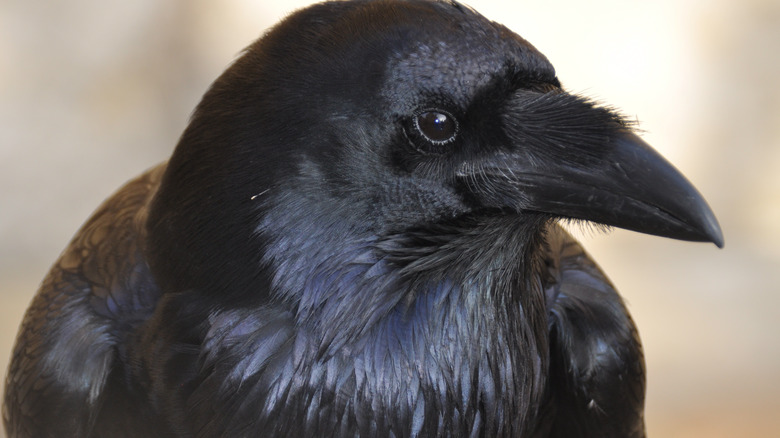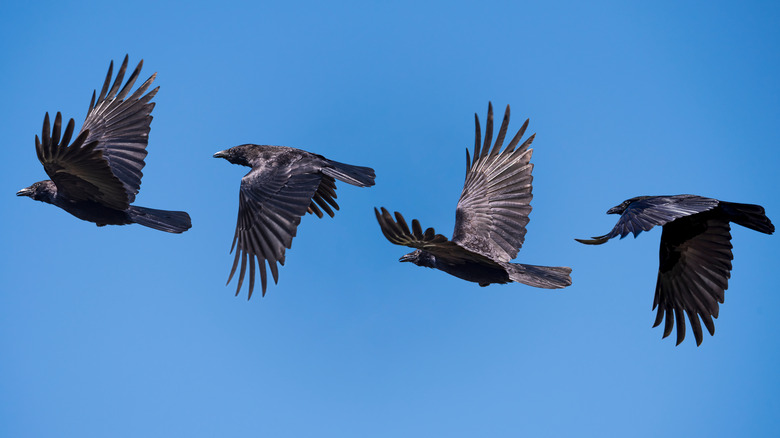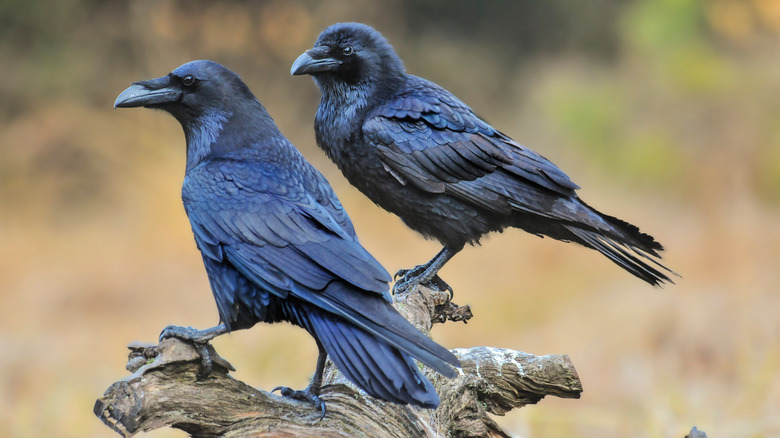The Unexpected Things Ravens And Crows Are Able To Recognize
Along with dolphins, apes, and elephants, ravens and crows are some of the smartest animals on earth. Like parrots, ravens can imitate human speech and sometimes even understand it, according to Did You Know Science. They have an unusually sophisticated system of communication, sometimes using gestures such as pointing with their beaks, other times using one of their 100 or so different vocal sounds (via Mental Floss and The Farmer's Almanac). They sometimes hunt or play with other animals, and like humans, they love to play in the snow. Also similar to humans, they play with "toys" such as sticks.
Ravens have complex social lives as well. Young ravens usually travel in groups, which are known as an "unkindness" of ravens, whereas the older generation often mates for life. They have also been observed comforting each other or punishing them when they've harmed the group by, according to Mental Floss and National Geographic.
They can recognize faces
The raven and crow also have an exceptional memory and use it to help themselves and others. Ravens remember and recognize those who have been kind to them or harmed them in some way. They can then communicate that information to other ravens, teaching them to recognize the same people (via Did You Know Science).
In addition, the raven's relative — the crow — can tell the difference between someone who is looking at them and someone who isn't, according to ZME Science. They fly away if someone is walking toward them while looking at them.
PET scans on crows, showed the areas of the brain that activate when exposed to faces they recognized. Generally, the faces elicited emotional responses. If they associated a face with a negative situation from the past, their neurological responses showed they remembered to fear that person. Parts of the brain associated with flight response (i.e. the urge to leave the situation) were also activated. This is similar to reactions humans have in comparative situations (via ZME Science).
They can tell who is mean or nice
Ravens' memory of faces was tested in a study conducted in Sweden and Vienna. In the experiment, humans and ravens exchanged pieces of bread and cheese. After some even trades, the humans divided into "fair" and "unfair" groups. The "unfair" humans would take the ravens' bread and eat the cheese themselves. A month later, in another trial, the ravens avoided the "unfair" humans, showing they recognized these people and remembered them (via ZME Science).
An experiment with crows had similar results. A researcher and his friends walked in a park, wearing two different kinds of masks. The group with one type of mask would trap crows, whereas the group with the other type of mask would simply walk past them. Years later, they returned to the park wearing the same masks, and the crows in the park attacked the people with the "trapper" masks. There was evidence as well that the crows involved in the original experiment had passed the information on to others, according to ZME Science. This type of information sharing is yet another similarity between humans and these remarkable birds.


